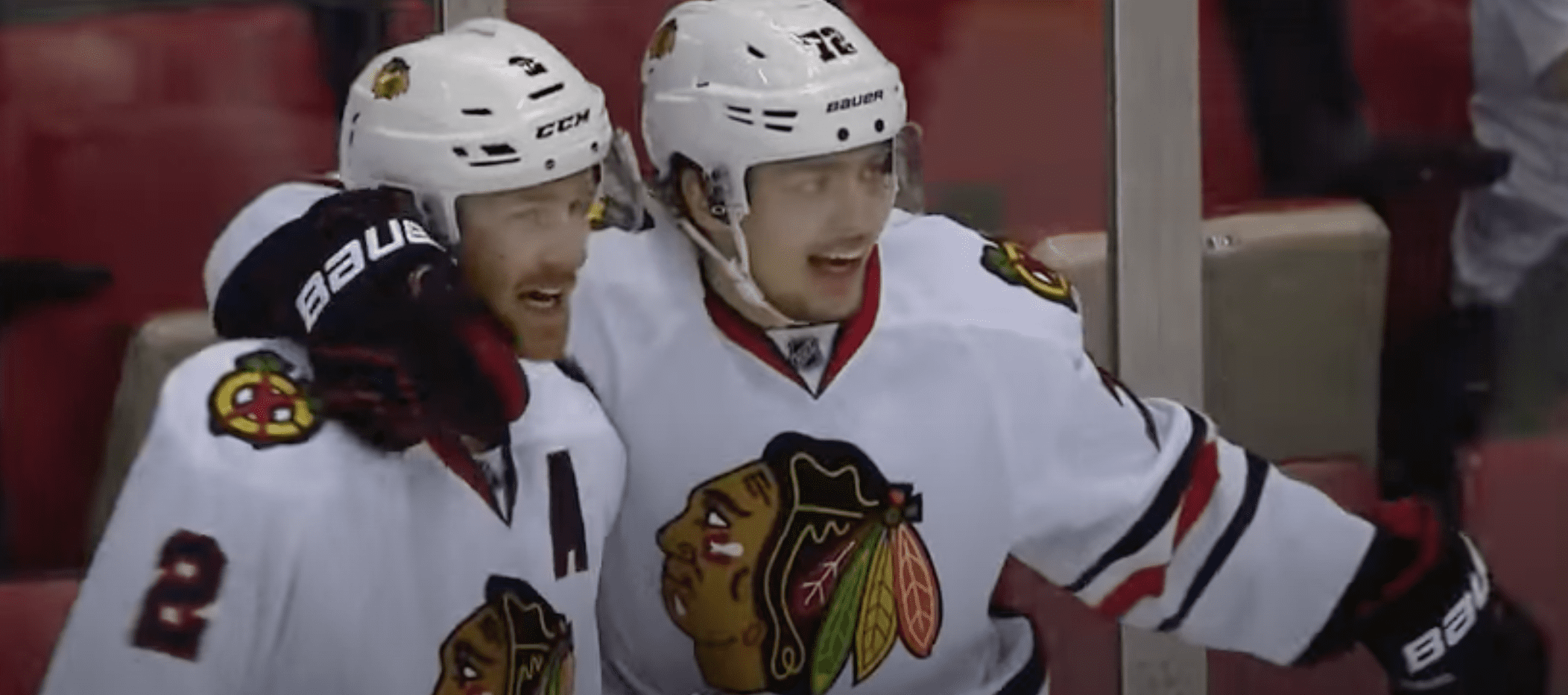Chicago Blackhawks
Blackhawks Rebuild Report: How ’16-17 Hastened The Fall

In the Blackhawks Rebuild Report, Chicago Hockey Now takes an in-depth look at different elements of the Chicago Blackhawks rebuild. In the first, we looked at every #1 overall pick taken in the Cap Era and their impact on their team’s fortunes. Now, we’ll look at how the 2016-17 was the first real indicator that a rebuild would be necessary.
All contenders eventually fall into the rebuild cycle of some kind. But these stories are designed to track how the Blackhawks expedited this cycle by a series of poor decisions, and an inability to fix what was broken.
This will be a seven part series, starting with the 2016-17 season.
Blackhawks Before the 2016-17 Season
Chicago fell to St. Louis in seven games in the first round of the 2016 playoffs– the sign of a team exhausted from three-consecutive seasons of deep playoff runs. 2013 ended with a Stanley Cup. 2014 completed with a heart wrenching seven-game loss to Los Angeles in the Western Conference Final. 2015 ended again with a Cup.
So when 2015-16 rolled around, the Blackhawks posted a 47-26-9 record and took third in the Central. Chicago climbed out of a 3-1 hole and nearly haunted St. Louis with the demons of playoff series past. But it wasn’t meant to be–St. Louis won 3-2 in Game 7 and knocked the defending champs from the playoffs.
In the offseason, Chicago was without a first-round pick, given up in the Andrew Ladd trade from New York. But a closer look sees many of the mainstays dealt before the season, during, or in the offseason. Patrick Sharp to Dallas for Trevor Daley. Daley dealt to Pittsburgh later that season for Rob Scuderi. The latter dealt two months later.
Then general manager Stan Bowman couldn’t seem to figure out what he was doing. Yes, they were tight on cap space but some of the players he dealt lacked sense. In June of 2016, he unloaded Andrew Shaw to Montreal, and then handed Teuvo Teräväinen over as a sweetener with Bryan Bickell to Carolina for a second and third round pick.
It was there that Bowman really drew the ire of the fanbase. But to his credit, he used the second-round pick acquired from Montreal to grab Alex DeBrincat. Every now and then he would hit.
But the hits were much less than than the whiffs. Ultimately, it was the first of many that would slowly bring the Blackhawks down. He would bring Brian Campbell back in free agency, but in what would be a constant theme, Bowman would try to rekindle the past with the acquisition of players from the glory years who were long past their best days.
Again, the misses significantly outnumbered the hits.
The 2016-17 Regular Season
It’s the most successful of the last seven seasons, one that saw Chicago enjoy the best record in the league. Keeping with his theme, Bowman was modest at the trade deadline but brought back Johnny Oduya for a little run of nostalgia. Like Ladd, Campbell, and eventually Brandon Saad later, he was much better in the memory bank than in the curtain call. But it didn’t matter by the end of the season. They won the Presidents Trophy, and skated into a first round matchup with Wild Card entrant Nashville.
No one expected what happened next. The signs were all there, but in one of the more shocking upsets of that decade, Chicago was broomed in four games by the upstart Predators.
But the shockwaves would continue into a full blown earthquake that wouldn’t fully register until the following season. In December of 2016, Bowman extended Artemi Panarin to a two-year, $12M deal. Panarin was one of the Blackhawks’ best players, notching his second consecutive 30-goal season. He looked like an absolute coup by Bowman.
Following the sweep, Bowman vowed changes. Unfortunately for Chicago and its fans, the changes would end up making the team worse.
The Aftermath
One of the first acts was dealing Panarin with Tyler Motte in a deal to Columbus for Brandon Saad and Anton Forsberg. To this day, it’s still a head scratcher. Though Panarin would eventually bolt Columbus for New York years later, the Blue Jackets won the trade by a mile. The Blackhawks never got the Saad of old while Panarin would cement his status as a star.
As if that wasn’t enough, Bowman also decided to send Niklas Hjalmarsson to Arizona for Laurent Dauphin and Connor Murphy. Both trades occurred the same day. It was seen as a way to get younger while bringing in the right guys to offset what had been a stunning playoff loss. Bowman also claimed it would help with cap space.
Beyond that, Bowman was attempting to balance out the loss of Marian Hossa, who retired from the game because of a skin allergy due to his equipment. Defenseman Trevor Van Riemsdyk was lost in the expansion draft.
Bowman rolled the dice after swearing to change things up. “I think they can get energized by having some of these young guys. We’re looking for that spark to achieve even more things down the road. Change is not always easy, but I think it’s necessary and I think we’re looking forward.”
Change isn’t easy, especially if you’re transforming a team that had won three Cups in six years. But changes must be gradual. These weren’t–it shocked Chicago to the core. But this wasn’t the end of the changes. Bigger ones were on the horizon.
The fallout from the season and Bowman’s reaction hastened Chicago’s fall from contender to rebuilder.












